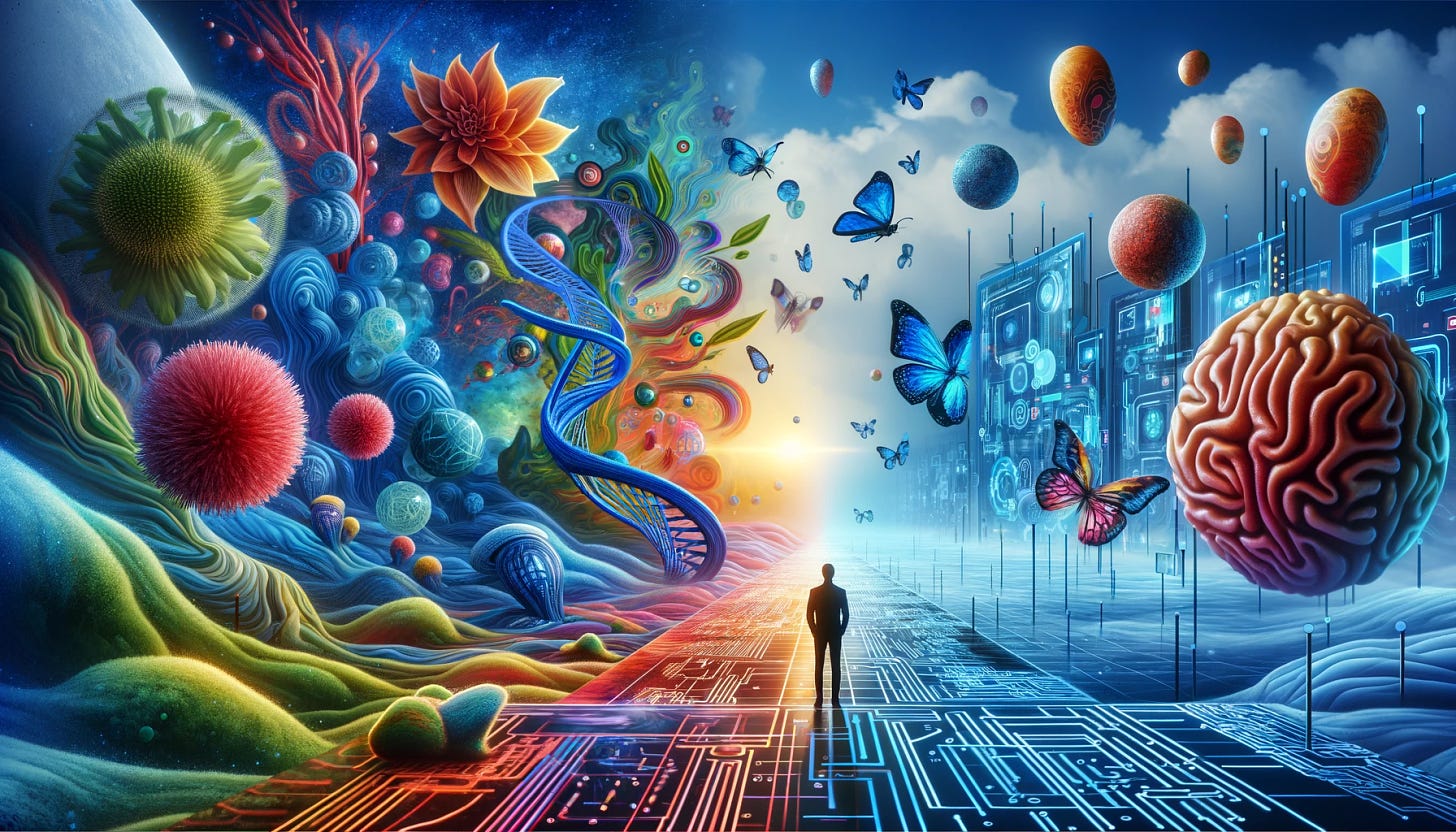The Sensory Kaleidoscope of Synesthesia
She comes in colours everywhere. She combs her hair. She's like a rainbow.
When I learned that women were more likely to have synesthesia, I wasn't surprised. Sensory prowess and adaptation appear to be more potent among women. They carry the records of our ancestry. Perhaps their tendency towards multi-modal perception has braced this paradigm.
Little is known about how synesthesia develops. It has been suggested that synesthesia emerges during childhood when children immerse themselves in abstract concepts for the first time. This theory is called the semantic vacuum hypothesis, could explain why the most common forms of synesthesia involve grapheme-color, spatial sequence, and number form. We have yet to answer how these abstract ideas shape the synesthetic experiences of children, and why do some carry these perceptions into adulthood.
There was a woman who declared that everything had color in her thought; the months of the year flowed through all the hues of the spectrum, the days of the week appeared as resplendent as Solomon in his glory, with morning bathed in golden light, noon adorned in vibrant orange, evening draped in crystal blue, and night veiled in deep violet.
Another one could taste her family, her children, on her tongue, discerning the colors they wore like a sensory palette. Jacqueline was yellow, Gunnar was blue, and Gabriela had always been red.
For one man, a single letter could dominate a word, causing the surrounding letters to cower and fade. Take the letter 'u' in 'instructions,' for instance; its neon-pink glow took center stage. Yet, in the word 'techniques,' the letters performed as an ensemble. Richard Feynman, renowned physicist, described seeing light-tan 'j's, slightly violet-bluish 'n's, and dark brown 'x's when dealing with equations.
For most of us, a month does not occupy specific places in our spatial perception. However, some synesthetes can point to where the number 12 resides, where June floats, or where the year 1973 lies. How do these spatial connections manifest in their minds, and what significance lies in these synesthetic coordinates?
Numbers, typically expressions of quantity, often take on additional qualities in the eyes of synesthetes, most notably colors. Below are the colours of numbers according to respondents.
If you put a cigarette in your mouth, do you experience it as yellow or purple? The answer is obviously yellow. All of us possess the potential for some degree of synesthesia. How often do our everyday experiences carry hidden synesthetic nuances that we've yet to uncover?
In reality, there has never been a time when sound, color, and feeling haven't mixed together. Perception is an interface. Our ancestors had long been navigating and surviving before they developed eyes to see the world around them. In the womb, it’s only after six months that we open our eyes for the first time. Most forces go beyond our imagination. Evolution tends to experiment with the perceptual interfaces of Homo sapiens. While we use technology to synthesize media, there are biological mutations for some one in twenty-five individuals linked to some form of synesthesia.
Whether biological or technological, the medium is the message. The process of perception shapes what we believe to have perceived. We are more like projectors than sensors. For some, their synesthesia has been heralded as a superpower.
Rus Col, a character from the TV series "True Detective”, inspired by the works of renowned horror writter Thomas Ligotti. Both writer and character alike appear to have a unique form of synesthesia. In Col’s case, he associated sounds, particularly music, with colors in his mind's eye. His particular affliction may have been just what he needed to uncover Lost Carcosa.
The famous composer Wolfgang Amadeus Mozart is believed to have experienced synesthesia. When he composed music, he saw musical notes in specific colors. Each musical key had a distinct color for him, and this synesthetic experience may have influenced his compositions.
Joan of Arc famously heard voices and received messages from saints and angels. While traditionally considered divine intervention, these auditory experiences could be interpreted as auditory-visual synesthesia. In her case, hearing voices lead her to believe she was receiving divine guidance. She was able to essentially convince the King of this too. In a way, her having synesthesia may make her life and influence less mysterious. Her visions weren't just auditory; they also involved vivid imagery. She could recall specific instructions and events and often make specific predictions of her opponents, despite being a young woman from a peasant family.
From the enigmatic origins of synesthesia in childhood to a maestro’s developed ability to interpret music's vivid hues, to the mathematician's cerebrally colorful equations and finally, to divine voices triggering visual associations, synesthesia shows us the limitations and potentials of our perceptions. As the evolutionary experimentation with perception continues and the hidden keys within genetic mutations emerge and spread, technology may just be the extension to man that changes the world to directly respond to our perceptions rather than being a mere signal for it.
Read on to learn more about the compartmentalizing of the mind or how the Internet is bringing about a new form of consciousness.















